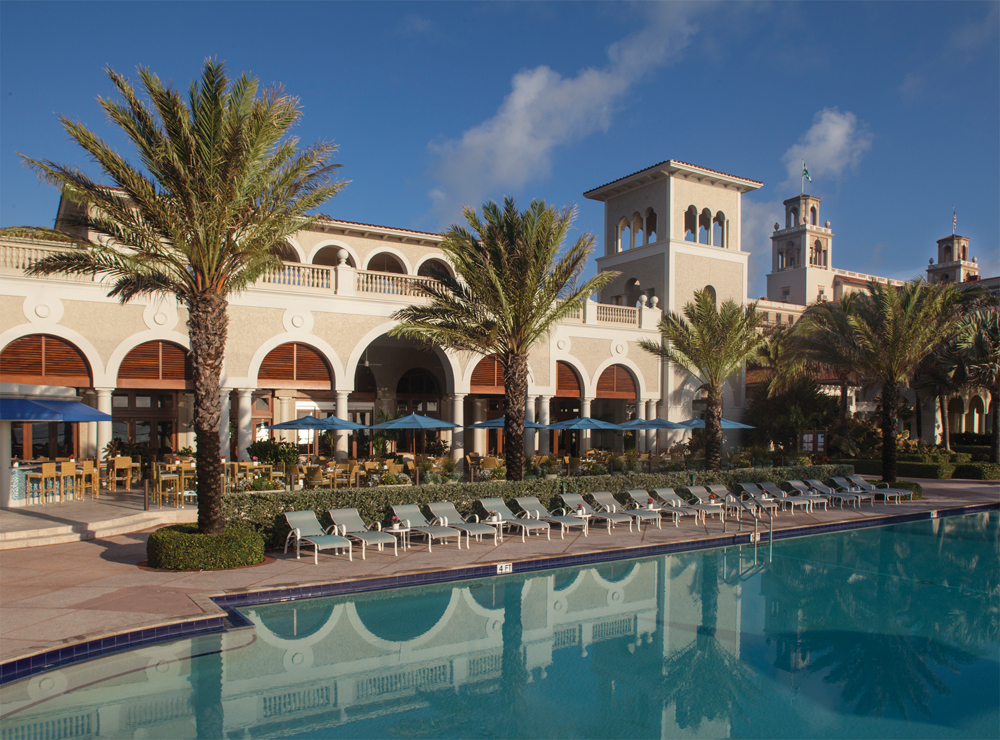Now rising in the Big Apple, the 70-story Central Park Marriott will be the tallest hotel in the Western Hemisphere when completed by CNY Group. The $200 million project, with structural engineering by WSP, reflects the generally upbeat mood in the hospitality market.
“Globally, hotel operating fundamentals are poised to remain strong in 2013,” says Mark Wynne-Smith, Global CEO of Jones Lang LaSalle’s Hotels and Hospitality Group. Despite some economic stressors, JLL believes supply and demand, availability of investment capital (especially from private equity funds), and REIT stock prices all point to “an attractive environment” for hotel business worldwide.
TOP HOTEL ARCHITECTURE FIRMS
2012 Hospitality Revenue ($)1 Gensler $69,090,0002 WATG / Wimberly Interiors $54,713,0003 HKS $32,000,0004 Leo A Daly $19,999,6215 RTKL Associates $19,730,0006 Hnedak Bobo Group $17,425,0007 Perkins Eastman $11,600,0008 Kohn Pedersen Fox Associates $11,251,8009 Cuningham Group Architecture $10,019,86510 HOK $10,011,000
TOP HOTEL ENGINEERING FIRMS
2012 Hospitality Revenue ($)1 AECOM Technology Corp. $100,190,0002 Parsons Brinckerhoff $28,900,0003 Buro Happold Consulting Engineers $16,165,0004 Rolf Jensen & Associates $7,600,0005 Thornton Tomasetti $7,218,7316 KPFF Consulting Engineers $6,000,0007 Arup $5,527,3718 Michael Baker Jr. $4,340,0009 Wiss, Janney, Elstner Associates $2,880,00010 WSP USA $2,696,642
TOP HOTEL CONSTRUCTION FIRMS
2012 Hospitality Revenue ($)1 Manhattan Construction $290,769,0002 Structure Tone $250,908,0003 Lend Lease $234,975,0004 Swinerton Builders $227,431,9505 Mortenson Construction $209,550,0006 Tutor Perini Corporation $209,216,1267 Brasfield & Gorrie $163,774,5588 Flintco $155,600,0009 Messer Construction $147,695,12810 Yates Cos., The $144,700,000
San Francisco, Los Angeles, Houston, Chicago, New York City, Hawaii, and Washington, D.C., are pinpointed as strong markets in the Americas (http://bit.ly/JLLHotels).
Adaptive reuse for hospitality is producing some particularly interesting remakes of historic properties. The strategy dovetails with travelers’ growing taste for local authenticity—a particular interest of Millennials, according to Tom Ito, Principal and leader for Gensler’s global hospitality practice. “For this generation, avoiding the norm is all about being true to yourself,” says Ito. “As this consumer group grows in spending power, hoteliers will need to provide personalized experiences that reflect the spirit of this demographic.”
Related Stories
MFPRO+ New Projects | Oct 30, 2024
BIG’s One High Line finally reaches completion in New York City’s West Chelsea neighborhood
One High Line, a luxury residential project spanning a full city block in New York’s West Chelsea neighborhood, reached completion this summer following years of delays related to investor lawsuits.
Urban Planning | Oct 30, 2024
Bridging the gap: How early architect involvement can revolutionize a city’s capital improvement plans
Capital Improvement Plans (CIPs) typically span three to five years and outline future city projects and their costs. While they set the stage, the design and construction of these projects often extend beyond the CIP window, leading to a disconnect between the initial budget and evolving project scope. This can result in financial shortfalls, forcing cities to cut back on critical project features.
MFPRO+ New Projects | Oct 30, 2024
Luxury waterfront tower in Brooklyn features East River and Manhattan skyline views
Leasing recently began for The Dupont, a 41-story luxury rental property along the Brooklyn, N.Y., waterfront. Located within the 22-acre Greenpoint Landing, where it overlooks the newly constructed Newtown Barge Park, the high-rise features East River and Manhattan skyline views along with 20,000 sf of indoor and outdoor communal space.
Libraries | Oct 30, 2024
Reasons to reinvent the Midcentury academic library
DLR Group's Interior Design Leader Gretchen Holy, Assoc. IIDA, shares the idea that a designer's responsibility to embrace a library’s history, respect its past, and create an environment that will serve student populations for the next 100 years.
Resiliency | Oct 29, 2024
Climate change degrades buildings slowly but steadily
While natural disasters such as hurricanes and wildfires can destroy buildings in minutes, other factors exacerbated by climate change degrade buildings more slowly but still cause costly damage.
Office Buildings | Oct 29, 2024
Editorial call for Office Building project case studies
BD+C editors are looking to feature a roundup of office building projects for 2024, including office-to-residential conversions. Deadline for submission: December 6, 2024.
Healthcare Facilities | Oct 28, 2024
New surgical tower is largest addition to UNC Health campus in Chapel Hill
Construction on UNC Health’s North Carolina Surgical Hospital, the largest addition to the Chapel Hill campus since it was built in 1952, was recently completed. The seven-story, 375,000-sf structure houses 26 operating rooms, four of which are hybrid size to accommodate additional equipment and technology for newly developed procedures.
Multifamily Housing | Oct 28, 2024
A case for mid-rise: How multifamily housing can reshape our cities
Often referred to as “five-over-ones,” the mid-rise apartment type is typically comprised of five stories of apartments on top of a concrete “podium” of ground-floor retail. The main criticism of the “five-over-one” is that they are often too predictable.
Sports and Recreational Facilities | Oct 24, 2024
Stadium renovation plans unveiled for Boston’s National Women’s Soccer League
A city-owned 75-year-old stadium in Boston’s historic Franklin Park will be renovated for a new National Women’s Soccer League team. The park, designed by Fredrick Law Olmsted in the 1880s, is the home of White Stadium, which was built in 1949 and has since fallen into disrepair.
Laboratories | Oct 23, 2024
From sterile to stimulating: The rise of community-centric life sciences campuses
To distinguish their life sciences campuses, developers are partnering with architectural and design firms to reimagine life sciences facilities as vibrant, welcoming destinations. By emphasizing four key elements—wellness, collaboration, biophilic design, and community integration—they are setting their properties apart.

















